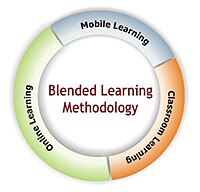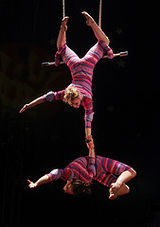What is Flexible Learning?
Contents
Introduction
Flexible learning can occur anywhere, anyhow, anyway. However flexible learning in itself is complex, and not as simple as this definition implies. The interaction of four components - technology, pedagogy, implementation strategies, organisational framework - can lead to learner-centred experiences when they are well integrated (Collis & Moonen, 2001). Also there are five dimensions which can impact:time; content of the course; entry requirements; instructional approaches and resources; delivery and logistics - each with several aspects (Casey & Wilson, 2005). Therefore it is important when designing flexible learning to take a range of factors into account.
Learning objectives
Use this list as a guide to set your learning goals for this topic.
- Define flexible learning in your context.
- Explore principles and processes of flexible learning and teaching.
- Investigate multiple dimensions of flexible learning.
- Critique a variety of examples of existing flexible learning and teaching options.
- Reflect on how the dimensions of flexible learning could be applied in your context.
Blended Learning

The term blended learning is often used to describe courses where a mix of delivery and learning options are used. However, a definition is problematic and it is probably wise to consider not only how media and technologies are mixed with traditional forms of delivery, but also how aspects such as pedagogies, contexts and theories of learning are mixed or 'blended' Oliver and Trigwell (2005). For example, face-to-face classes may be combined with online learning and mobile learning as shown in the diagram. In this way, resources can be provided in various ways using media such as videos, audio, e-books etc, and participants can use different tools to communicate with each other and the teacher, and to interact with the learning environment.
Computer conferencing (e.g., Skype or Adobe Connect) or video conferencing may be used for real-time interactions, and discussion forums for asynchronous interactions. The online learning environment may be contained in an institutional learning management system (e.g., Moodle) and password protected, or, it might be open and use web 2.0 tools and approaches for social networked learning. The options for learning can be flexible on a continuum ranging from Fixed to More Flexible, according to the five dimensions of flexibility: Time, Content, Entry Requirements, Instructional approach and resources and Delivery and Logistics.
The design and flexibility of the learning environment is usually dependent on many factors. For example:
- the philosophy of the teacher;
- capability of the teacher and students (includes skills and confidence);
- organisational (and governmental) priorities;
- trends in education;
- accessible technologies; and
- subjects offered.
Also, students' learning preferences may strongly influence the design of a flexible or blended learning environment. Therefore, the 'blendedness' may vary with some courses being mostly f2f with some email communication to a mix of f2f and online resources or a totally online course as shown in the diagram called Variations of blended learning programs (Scroll down to see this once you have accessed the website.)
|
Examples of Flexible Learning
Today, many organisations are working out new ways to offer flexibility in their learning programmes. For example, a combination of distance and face-to-face contact(blended), flexible start and end dates, the full assessment of an individual's skills and understanding prior to starting a course, smaller courses to pick and mix, individualised or negotiated assessment, open access for wider participation. In this topic we will look at a few examples and consider the methods used to achieve flexibility.
Tips:
|
Resources for this topic
The resources are divided into 'Must have resources' and 'Additional resources'. That way you can choose how much time to spend on the materials that are provided. You may find it more useful to ignore the additional resources and look for information that suits your context better. If you cannot find anything that helps you develop your understanding about flexible learning in your specific context, contact the facilitator who can help you to find material that is more relevant
Must have resources
- Casey, J. & Wilson, P. (2005). A practical guide to providing flexible learning in further and higher education. This is a very useful resource about flexible learning.
- Look for the five dimensions of flexibility, and the seven-stage continuum of flexibility.
- The Appendix (pages 34 - 135) contains templates which you may wish to use.
- Collis, B. & Moonen, J. (2001). Flexible learning in a digital world. Open and Distance Series. London: Kogan page Ltd. Chapter One - Hard copy or Google book.
- A copy of Chapter One is available on Moodle in the Flexible Learning folder.
- Oliver, M. & Trigwell, K. (2005). Can blended learning be redeemed? E–Learning, 2(1), 17-26. Retrieved from http://tinyurl.com/b5z93gd
Additional resources
- Listen to or read the article: Akyol, Z., Garrison, D.R. & Ozden, M. (2009). Online and blended communities of inquiry: Exploring the developmental and perceptional differences. The International Review of Research in Open and Distance Learning, 10(6).
- You may wish to search for more articles in the open online journal The International Review of Research in Open and Distance Learning.}}

